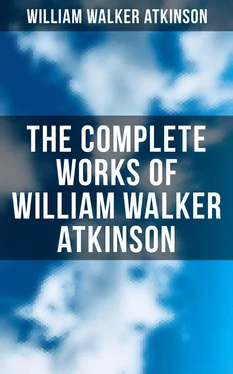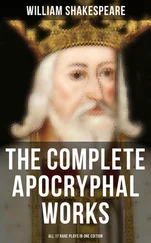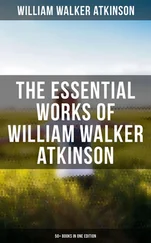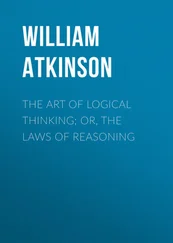Mr. Sheppard gives the following suggestion regarding the cultivation of the dramatic element in public speaking: “It can be cultivated by the cultivation of the elocutionary instinct, the rhetorical instinct, the dramatic instinct, by the training of the ear for rhetoric and the eye for rhetorical and dramatic effects. Imitation helps, and observation plays its part, but if the art of the actors and the art of the speakers are confounded, and you undertake to acquire one by acquiring the other, you will acquire neither. * * * To repeat, so as to prevent misconception or confusion: First, the self-excitation or physical earnestness of the actor is just as desirable and valuable to the speaker as it is to the actor; second, the dramatic manner, which is inseparable from the drama, is a very useful auxiliary to public speaking; but, third, when and by whom this dramatic manner is to be used is to be left to the judgment of the speaker; and fourth, that judgment may be trained to an indefinite extent.”
And, so say we:
In conclusion, let us consider the words of Cardinal Newman, who said: “Deductions have no power of persuasion. The heart is commonly reached, not through the reason, but through the imagination, by means of direct impressions, by the testimony of facts and events, by history, by description. Persons influence us, voices melt us, looks subdue us, deeds inflame us.”
Chapter XV.
The Closing Tale
Table of Content
THE SIXTH step in Argumentative Discourse is that known as the Peroration or Closing , in which the speaker sums up all that has been said, and strives to forcibly impress upon the mind of his hearers a clear, strong idea of his side of the case—the spirit and essence of his argument; in fact, as Hyslop well says: “Just as definition introduces discourse, recapitulation should close it * * * a recapitulation which sums up in outline all the arguments which have been presented.” To many speakers, the opening and the closing steps are the most difficult. As Hill says: “It is in Exordiums and Perorations that a young writer (or speaker) often fails; he does not know how to get at his subject or how to get away from it. He should beware of putting in a word of introduction that is not necessary to prepare the way for his argument, and of adding a word at the end that is not necessary to enforce his conclusion. ‘Is he never going to begin?’ ‘Will he never have done?’ are questions equally fatal.”
In the recapitulation, the subject of the entire argument should be gone over, clearly and briefly, bringing out each important and telling point with emphasis, and passing over the minor points with but a brief mention. Beware of repeating the argument in closing—the time for details of argument has passed. Instead, treat the argument as closed, and assume the tone and manner of one reciting the “accomplished fact” of proof of the various points in dispute. The closing should be a summing up of successful argument—the recapitulation of points scored. It should ever be pitched to the triumphal key— the note of success should be heard throughout it.
In the closing talk, as in the sentence or paragraph, the speaker should seek to emphasize the main points and ideas, and subordinate the less important ones. And just as his paragraphs should be arranged with the idea of moving from the less important and less interesting points to the more important and more interesting, so in his closing he should move forward from the less interesting and less important toward those of a greater degree of importance and interest, until at last the climax is reached, and the discourse ends. That is, it should end there—but alas! too many are “unable to let go,” and after the climax is reached they persist in continuing, thus bringing about an anti-climax and weakening what would otherwise have been an effective closing. Follow this rule: When you have said all that is of importance, and have reached your climax—stop! Every word uttered after this point is reached, weakens what you have already said .
The study of the closing parts of the speeches of well-known orators will be valuable to the student in pointing out by actual example the technique of the peroration or closing talk. Far more may be thus gained from actual example than from stated rules or formal methods. The spirit of effective oratory is contagious—one’s torch must be lighted at that of a predecessor.
It is customary to close the discourse with an earnest appeal which brings the climax to a head. This is the closing chord— the final note of the trumpet. It should, if possible, be prepared and fixed in the mind before the argument is commenced. Just as the opening talk should be prepared after the discourse itself is fully mapped, so it is well to prepare the peroration or closing paragraph before the final mapping out of the argument. It should be the goal toward which the argument travels. It should be the crown which is sought for in the struggle of the discourse.
The following passage was used by Lord Brougham in closing his speech defending Queen Caroline, and was the result of previous study and preparation on his part—some authorities stating that it was rewritten over twenty times before its delivery:
“Such, my lords, is the case now before you! Such is the evidence in support of this measure—evidence inadequate to prove a debt—impotent to deprive of a civil right—ridiculous to convict of the lowest offence—scandalous if brought forward to support a charge of the highest nature which the law knows—monstrous to ruin the honor, to blast the name of an English Queen! What shall I say, then, if this is the proof by which an act of judicial legislation, a parliamentary sentence, an ex post facto law, is sought to be passed against this defenceless woman? My lords, I pray you to pause. I do earnestly beseech you to take heed! You are standing on the brink of a precipice— then beware! It will go forth your judgment, if sentence shall go against the queen. But It will be the only judgment you ever pronounced, which, instead of reaching its object, will return and bound back upon those who give it. Save the country, my lords, from the horrors of this catastrophe—save yourselves from this peril—rescue that country, of which you are the ornaments, but in which you can flourish no longer, when severed from the people, than the blossom when cut off from the roots and the stem of the tree. Save that country, that you may continue to adorn it—save the Crown, which is in jeopardy—the Aristocracy, which is shaken—save the Altar, which must stagger with the blow that rends its kindred Throne! You have said, my lords, you have willed—the Church and the King have willed—that the Queen shall be deprived of its solemn service. She has instead of that solemnity, the heartfelt prayers of the people. She wants no prayers of mine. But I do here pour forth my humble supplication at the Throne of Mercy, that that Mercy may be poured down upon the people, in a larger measure than the merits of their rulers may deserve, and that your hearts may be turned to justice!”
The Art of Logical Thinking; Or, The Laws of Reasoning
Table of Content
CHAPTER I. REASONING
CHAPTER II. THE PROCESS OF REASONING
CHAPTER III. THE CONCEPT
CHAPTER IV. THE USE OF CONCEPTS
CHAPTER V. CONCEPTS AND IMAGES
CHAPTER VI. TERMS
CHAPTER VII. THE MEANING OF TERMS
CHAPTER VIII. JUDGMENTS
CHAPTER IX. PROPOSITIONS
CHAPTER X. IMMEDIATE REASONING
CHAPTER XI. INDUCTIVE REASONING
CHAPTER XII. REASONING BY INDUCTION
CHAPTER XIII. THEORY AND HYPOTHESES
CHAPTER XIV. MAKING AND TESTING HYPOTHESES
CHAPTER XV. DEDUCTIVE REASONING
Читать дальше












